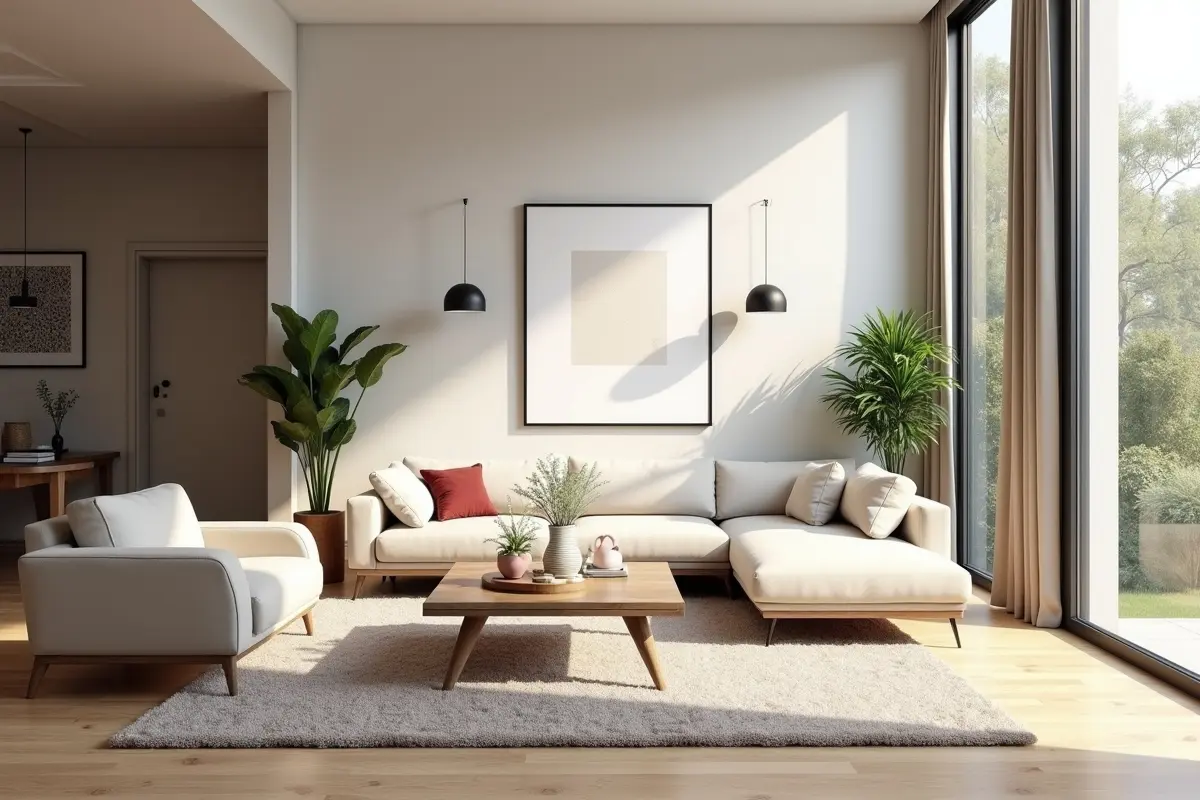Is your space starting to feel more “copy-paste” than personal? You’re not the only one. The rise of social media has brought a flood of interiors that look beautiful, but somehow all the same. White walls, boucle chairs, and beige-everything might be easy on the eyes, but they often lack soul. If you’re craving something with a bit more depth, these eight design trends go far beyond the fleeting Pinterest aesthetic.
They’re not just about what looks good. They’re about how a space feels to live in.
Contents
1. Rich, Saturated Colour
Soft neutrals had their time. Now, colour is making a strong comeback, but not in a flashy or chaotic way. Think deep forest greens, muddy ochres, burnt brick tones, and moody navy blues. These hues create a richer, more lived-in atmosphere and can add a sense of permanence that trendy tones often lack.
It’s less about shock value, more about creating warmth and personality. Walls painted in these shades don’t just sit in the background; they shape the energy of the room. Paired with natural materials and vintage furniture, it all comes together beautifully.
If you’re unsure where to start with colour, it’s worth having a chat with the team at John Charles Interiors. They can help you choose tones that truly suit your space, without it feeling overwhelming. A professional interior design consultation can open up a whole world of possibilities and bring some much-needed clarity when you’re refreshing your interiors.
2. Mixed Eras, Not Matchy-Matchy
People are moving away from the “everything must match” mindset. Interiors that blend different eras and styles tend to feel more layered and authentic. You might see a curved mid-century sofa sitting next to a Victorian cabinet, or a rustic dining table paired with sleek, modern lighting.
It’s not about creating visual chaos. It’s about telling a story. Homes that reflect a mix of periods tend to look like they’ve evolved naturally over time, which makes them more interesting and less staged.
3. Textured Walls
Flat, smooth walls are starting to feel a little one-dimensional. What’s gaining popularity now are tactile finishes that give a space more presence. From limewash and Roman clay to microcement and plaster, these materials add quiet depth without shouting for attention.
Unlike wallpaper or bold murals, textured wall finishes are subtle but make a big difference. They catch light in unique ways and shift slightly in tone throughout the day, adding life to even the simplest of spaces.
4. Statement Ceilings
The ceiling used to be the most overlooked part of a room. Now? It’s getting a lot more love. People are beginning to treat ceilings as a fifth wall, using them as a way to introduce texture, contrast, or colour.
This can be as simple as painting it a darker shade than the walls, or as bold as using timber beams, wallpaper, or patterned tiles. It changes the entire feel of a room without cluttering the floor plan.
5. Personalised Collections
Here’s where things get more meaningful. There’s a strong move away from mass-produced décor toward personal collections. Whether it’s books, ceramics, artwork, or travel keepsakes, these items bring real character into a space.
The key is in the curation. Instead of clutter, think considered displays. Open shelving, gallery walls, and layered surfaces offer the perfect stage for items that hold real value—emotional or aesthetic. A home that tells your story always stands out more than one that’s just following the latest look.
- Choose a consistent colour palette – this helps unify pieces even if they’re from different time periods.
- Vary height and scale – small items next to taller pieces create movement.
- Leave some space – allow your eye to rest so it doesn’t all feel crowded.
- Rotate pieces occasionally – this keeps things feeling fresh without buying more stuff.
- Be honest about what you love – don’t display it just because it fits the aesthetic.
6. Multi-Use Spaces That Actually Work
Open-plan design was all the rage, but now people are looking for more intentional layouts. With working from home still common, spaces need to do more than one thing but not at the cost of comfort or functionality.
Rather than awkwardly squeezing a desk into a corner of the bedroom, design is shifting towards clever zoning, partial partitions, and furniture that adapts. Foldaway tables, sliding panels, and nooks that transform depending on the time of day are practical, but they’re also a smarter use of space. It’s less about everything being open and more about everything being usable.
7. Natural Materials, Done Properly
Natural materials have always had appeal, but now they’re being embraced in a more raw and honest way. Rough timber, imperfect stone, woven grasses, unpolished concrete—they bring texture and tactility to a room, without needing to be overly refined.
Rather than veneered surfaces that look like wood or glossy tiles that mimic stone, the real thing is making a return. Yes, it comes with its quirks, but that’s part of the charm. The grain of real wood, the inconsistency in handmade tiles… these details make a home feel human.
8. Lighting That Does More Than “Look Nice”
Lighting is shifting from being just decorative to genuinely functional and atmospheric. People are thinking beyond the standard ceiling fixture and starting to layer their lighting. It’s no longer about what a fixture looks like when it’s off, but how it performs when it’s on.
Dimmable sconces, hidden LED strips, warm-toned bulbs, and a combination of table, floor, and ceiling lighting all help to create a space that can shift in mood depending on the time of day. Whether you want to focus, relax, or entertain, good lighting supports the rhythm of your life.
Where It’s All Heading
Design is becoming more individual. Less about chasing what’s trending, more about creating spaces that actually reflect how people live, what they love, and what makes them feel grounded. The common thread between all of these trends? Longevity.
It’s not about doing a full gut renovation or starting from scratch. It’s about making mindful changes, layering in character over time, and choosing materials and pieces that hold their own, even as fads come and go.





